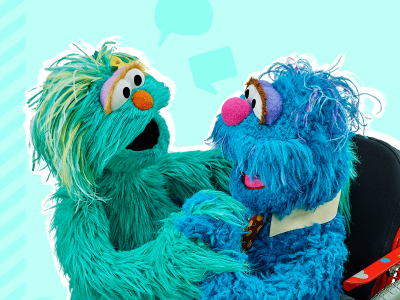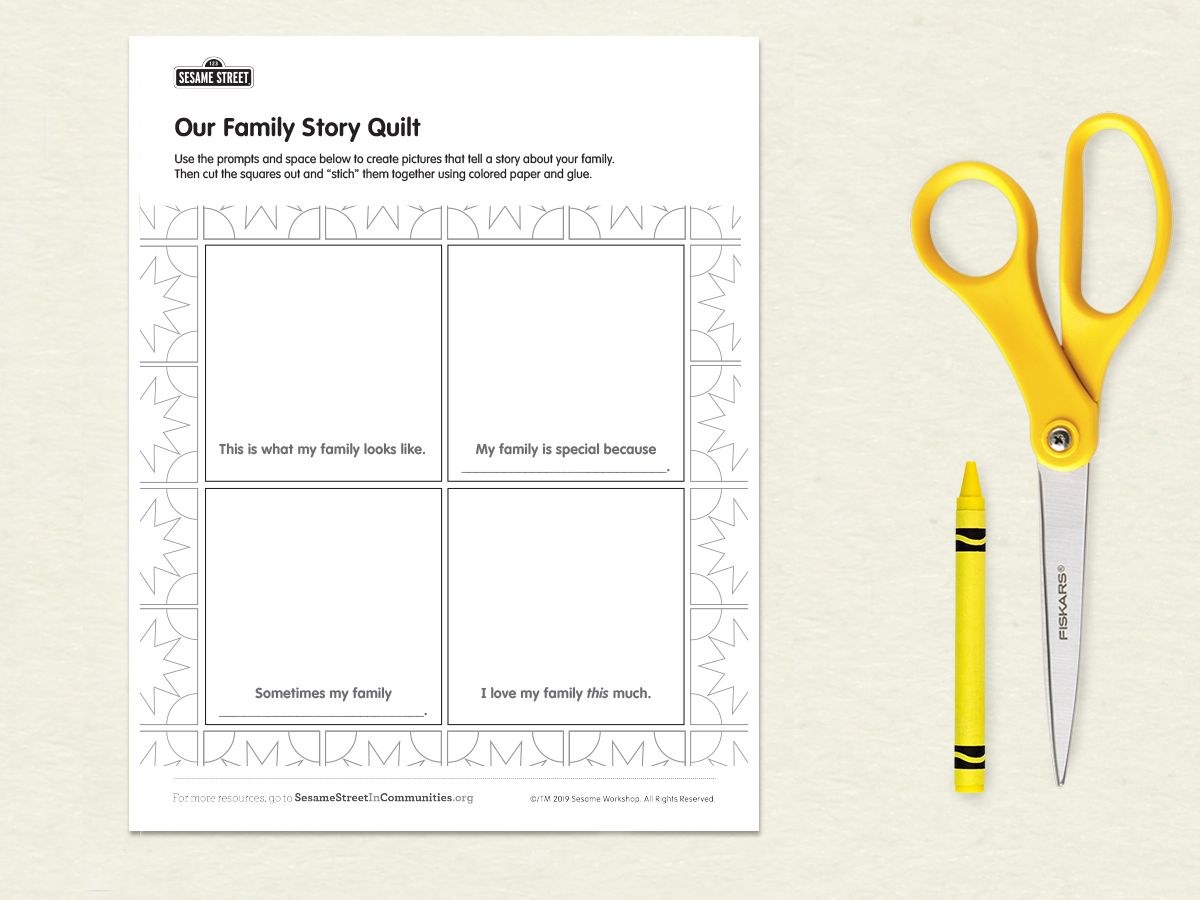
Session 2: Talking About Injuries
Invite families to share their story with pride.
At some point, caregivers will need to share details about their injured loved one with children, family members, and others.
As a provider, you can help them feel confident and capable of having these sometimes difficult conversations.
This workshop offers strategies to:
- Help parents explain injuries to children.
- Give caregivers confidence to explain injuries to others.
- Encourage the whole family to share their story with pride.
Looking for the rest of the sessions? Visit the Supporting Caregiving Families page.
NOTE: As with other workshops in this series, most activities can benefit both kids and adults, one-on-one or in groups. Depending on who you’re working with, change or leave out activities as you see fit. You know your kids and families best!
1. Explaining Injuries to Children
Explaining Injuries to Children
When families take on caregiving, children will hear difficult information about their loved one. There are age-appropriate ways to talk about injuries with children.
Let caregivers know:
- When sharing updates with children, it’s important to manage how, how much, and how often we share.
- Sometimes the best way to explain injuries, especially brain-related ones, is to talk about changes in behavior they might cause.
- Offering information in smaller doses can help children grasp it all.
- Offer gentle reminders and lots of comfort.
- Let kids know you’re always here to listen and talk. Kids may need reminders. Even if you’ve talked about a condition before, they may be confused or forget that the injury is long-term.
Invite caregivers to watch the Talking About Brain-Related Injuries video, featuring Rosita and her mom. After the video, lead a group discussion about how a loved one’s injuries may affect their behavior.
2. Explaining Injuries to Others
Explaining Injuries to Others
Caregivers may find it hard to explain injuries to acquaintances, friends, and even family members. Not everyone will understand right away, and stigma or shame can surround the injury. As a provider, you can help families own their story and share it with others in appropriate and even joyful ways.
Let caregivers know:
- You can explain an injury and maintain your loved one’s dignity at the same time.
- Sharing your story can help ease the burden for you and inspire hope in others!
- There’s so much to be joyful about, grateful for, and proud of!
Together with participants, watch this video of Rosita and her family. Then use the activity below to get families excited about their caregiving story.
Assure families: Be proud of your story, and work together to find a way to talk about it with others. As you think about how to share details of the injury, take cues from Rosita and her family. They’re just like other families, but they do things a little differently. And they have so much fun!
Story Quilt Activity
You’ll need:
Blank paper
Colorful or decorative paper
Scissors
Glue
Coloring materials
Instructions:
- Distribute the My Family Story Quilt printable and invite families to color pictures in each of the squares, using the prompts.
- Let families know they can create more squares using the blank paper.
- Have grown-ups cut out the squares and “stitch” them together using glue and colorful paper.*
- Encourage families to share their story quilts with the larger group.
As families present their story quilts, prompt them to practice key phrases together.
- “We are the _________ family, and we are strong.”
- We do some things a little differently, but that makes us awesome.”
- “We help each other every day.”
- “I’m proud of my mom (sister, brother, dad, etc.)”
*Note: If you’re short on time or supplies, you can use the printable as is.
3. Answering Tough Questions
Answering Tough Questions
Big changes can leave young children feeling confused or afraid. They may have questions that are tough to answer.
Let caregivers and kids know:
- It’s okay for kids to be curious and ask questions.
- It’s okay to answer questions honestly, and it’s okay to say, “I don’t know.”
- The most important thing is to assure kids that they are safe and loved.
Distribute the Children’s Questions About Caregiving article. Ask grown-ups to underline or make note of things they find useful. Review the questions and answers together as a group. Then talk about other difficult questions and ways parents might answer them.

